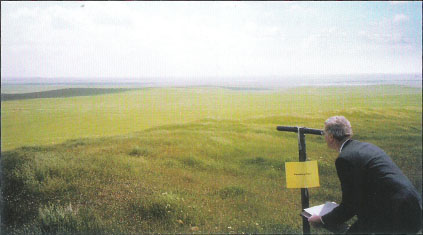All Issues
“Tidal Wave II” to hit higher education
Publication Information
California Agriculture 54(1):10-10.
Published January 01, 2000
PDF | Citation | Permissions
Full text
UC will need to absorb 63,000 additional students during the next decade, nearly 9% of the projected 700,000 new students expected to enroll in California's public institutions of higher education.
Dubbed “Tidal Wave II” by former UC president Clark Kerr, a major increase in the college-age population will swell UC's enrollment 43% between the 1998-99 and 2010-11 school years, to 210,000 students.
This projected increase equals UC's total enrollment growth over the last 30 years, and is equivalent to the existing enrollments of UC Berkeley and UC Los Angeles combined.
“The University is committed to accommodating the students who are headed our way,” UC President Richard C. Atkinson said. “We absolutely must keep our promise of access to California's students, and we will do so in ways that maximize efficiency while preserving quality.”
In less than 5 years, the transformation of this field near Merced into the newest UC campus will be well under way. Gov. Gray Davis has created a “Red Team” to expedite the process in order to begin educating students at UC Merced by 2004.
Under the Master Plan for Higher Education, UC is obligated to enroll students from the top 12.5% of California's high-school graduating classes each year ( see p. 56 ).
During the 1960s, UC registration also grew sharply as baby boomers enrolled during “Tidal Wave I.” But the growth now facing UC is expected to last for a longer period of time, and a smaller proportion will be absorbed by the development of new campuses. The University plans to open one new campus, UC Merced, by 2005 and enroll 5,000 students there by 2010.
Announced Jan. 10, the governor's 2000-01 budget would provide UC with a 12.1%, $328 million increase in general funds, with substantial new funding proposed for the professional development of teachers, faculty and staff salary increases, new investments in research, and 6,000 new students.
To meet enrollment demand, the University is also pursuing a range of strategies such as:
-
Increasing instructional activities during the summer.
-
Enrolling more students at off-campus locations; the governor's proposed budget would fund a new off-campus center in the Santa Clara Valley.
-
Expanding regular enrollments during the fall, winter and spring quarters.
-
Shortening students' time to graduation, which currently averages 13 quarters.
Campus growth, along with upgrades of existing facilities, will require $500 million per year in capital funding, according to UC Office of the President. The University will need to hire approximately 3,000 new faculty members and expand student services such as housing and advising.





